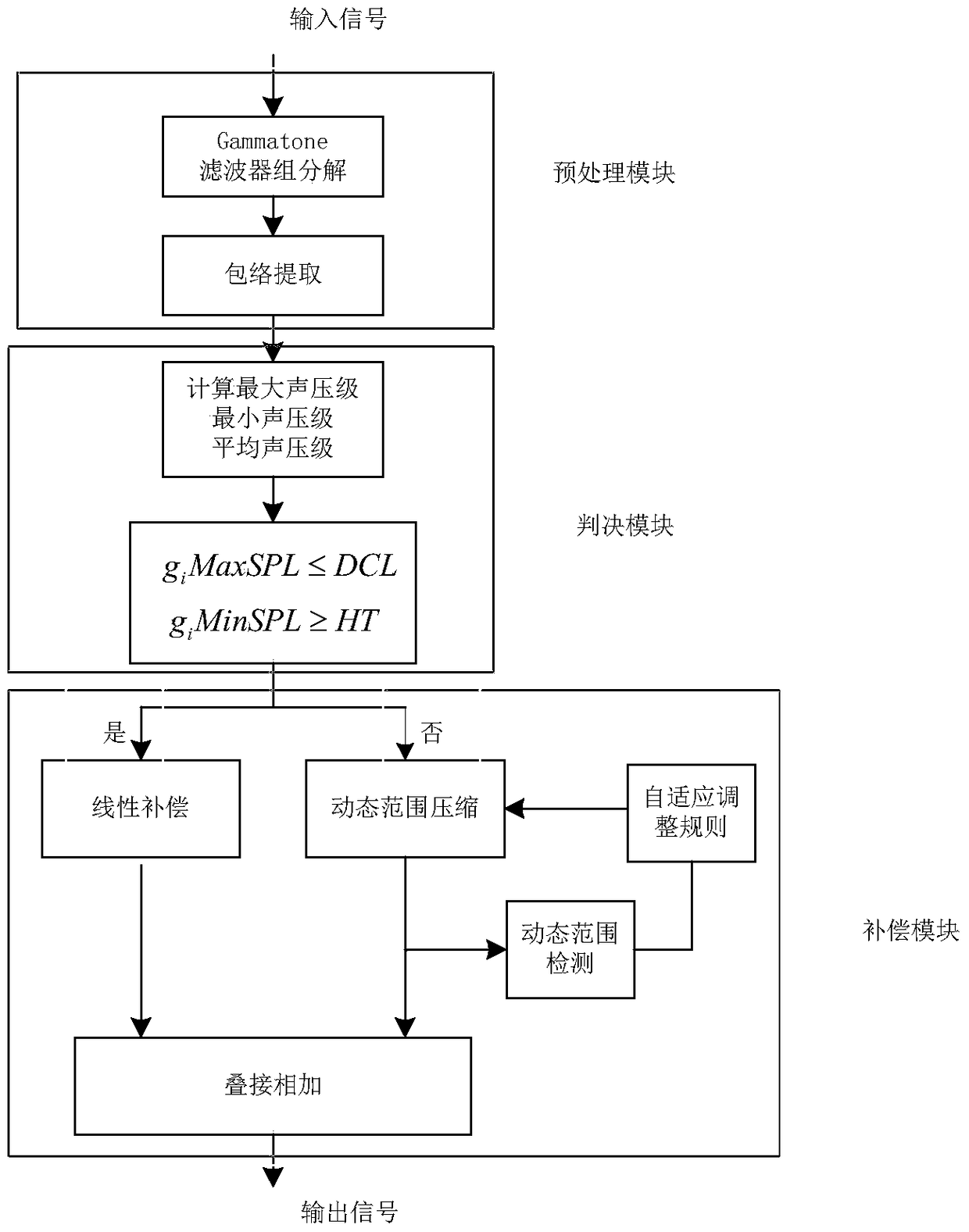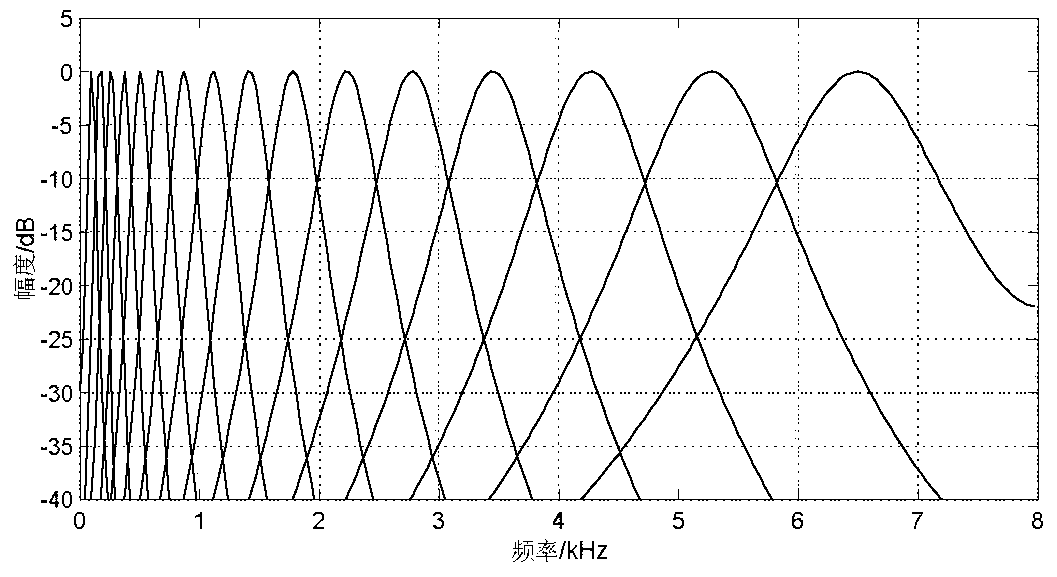An Adaptive Hearing Compensation Method
A compensation method and adaptive technology, applied in hearing aids, electrical components, etc., can solve the problem of not achieving satisfactory results, and achieve the effect of increasing audibility, reducing distortion, and reducing distortion
- Summary
- Abstract
- Description
- Claims
- Application Information
AI Technical Summary
Problems solved by technology
Method used
Image
Examples
Embodiment Construction
[0035] The technical solutions of the present invention will be further described below in conjunction with the drawings and embodiments.
[0036] figure 1 Shown is a flowchart of an adaptive hearing compensation method according to an embodiment of the present invention. From figure 1 It can be seen that the method includes the following steps:
[0037] S1: Preprocessing the input voice signal;
[0038] The speech signal is passed through the gammatone filter bank to obtain the decomposed channel signal; the envelope of the channel signal is obtained by Hilbert transform. The frequency response of the 16 passway gammaton filter bank that the present invention adopts is as figure 2 shown. The gammatone filter bank is selected for channel decomposition of the input signal for the following reasons: 1) the perceived loudness of the signal in each channel after the gammatone filter bank is decomposed by the human ear is the same; 2) the delay of the filter bank is low , es...
PUM
 Login to View More
Login to View More Abstract
Description
Claims
Application Information
 Login to View More
Login to View More - R&D
- Intellectual Property
- Life Sciences
- Materials
- Tech Scout
- Unparalleled Data Quality
- Higher Quality Content
- 60% Fewer Hallucinations
Browse by: Latest US Patents, China's latest patents, Technical Efficacy Thesaurus, Application Domain, Technology Topic, Popular Technical Reports.
© 2025 PatSnap. All rights reserved.Legal|Privacy policy|Modern Slavery Act Transparency Statement|Sitemap|About US| Contact US: help@patsnap.com



